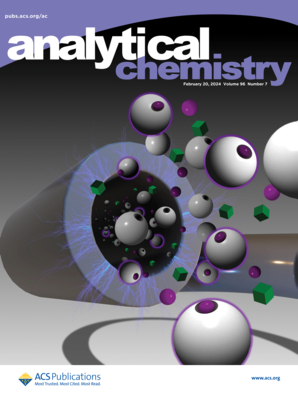An Aggregation-Induced Room Temperature Phosphorescence Probe for the Efficient and Selective Detection of Heparin and Protamine
IF 6.7
1区 化学
Q1 CHEMISTRY, ANALYTICAL
引用次数: 0
Abstract
Heparin is a vital macromolecule that regulates blood coagulation, while protamine is an essential polypeptide clinically used to counteract heparin overdose. Detecting both heparin and its antidote protamine under physiological conditions is crucial for biological and clinical applications. This report introduces a cucurbituril[8] (CB[8])-based phosphorescent probe for their detection. The method employs a nanoassembly induced phosphorescence switch-on mechanism for heparin sensing and a disassembly induced phosphorescence switch-off approach for protamine detection. An arginine-rich guest forms a supramolecular complex with heparin, enhancing phosphorescence under secondary confinement and enabling its detection. Conversely, protamine sulfate, as a stronger competitor for heparin, disrupts the probe-heparin aggregates, leading to emission quenching and protamine sensing. This sensor demonstrated high selectivity in detecting both analytes in biological samples, such as human blood serum and urine. The detection limits for heparin and protamine were determined to be 61 and 82 ng/mL in 10% HBS, respectively.

求助全文
约1分钟内获得全文
求助全文
来源期刊

Analytical Chemistry
化学-分析化学
CiteScore
12.10
自引率
12.20%
发文量
1949
审稿时长
1.4 months
期刊介绍:
Analytical Chemistry, a peer-reviewed research journal, focuses on disseminating new and original knowledge across all branches of analytical chemistry. Fundamental articles may explore general principles of chemical measurement science and need not directly address existing or potential analytical methodology. They can be entirely theoretical or report experimental results. Contributions may cover various phases of analytical operations, including sampling, bioanalysis, electrochemistry, mass spectrometry, microscale and nanoscale systems, environmental analysis, separations, spectroscopy, chemical reactions and selectivity, instrumentation, imaging, surface analysis, and data processing. Papers discussing known analytical methods should present a significant, original application of the method, a notable improvement, or results on an important analyte.
 求助内容:
求助内容: 应助结果提醒方式:
应助结果提醒方式:


